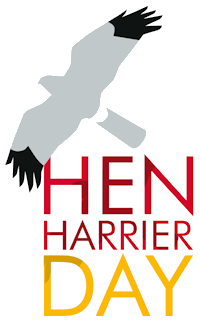Tracking hen harriers with satellite tags
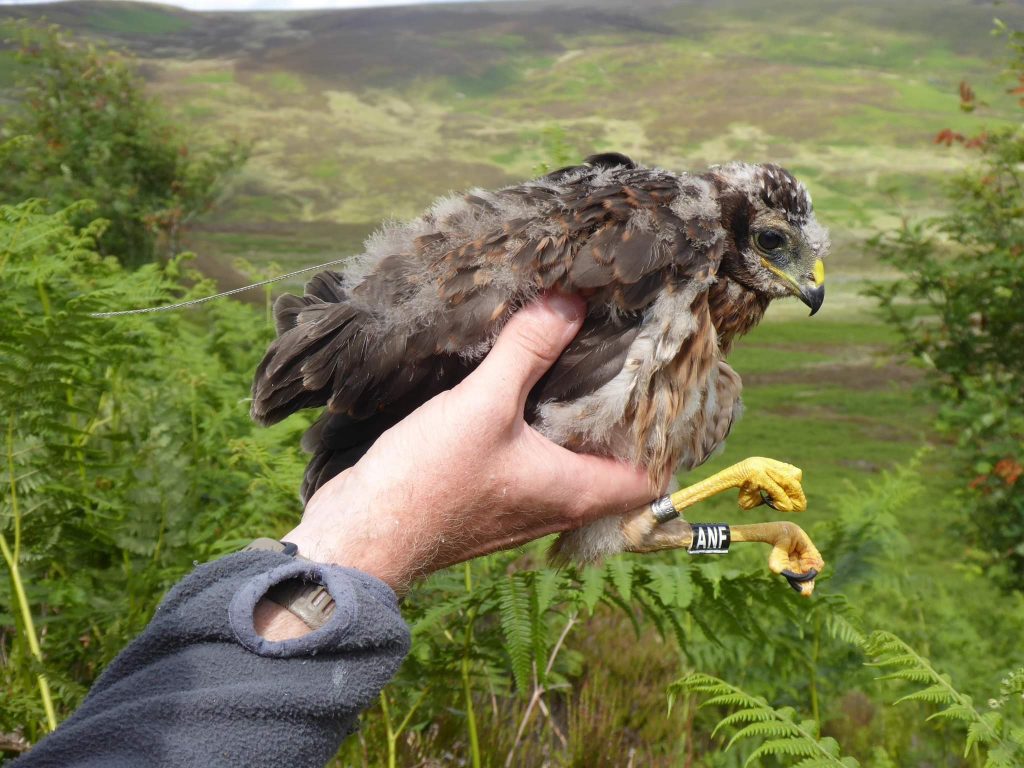
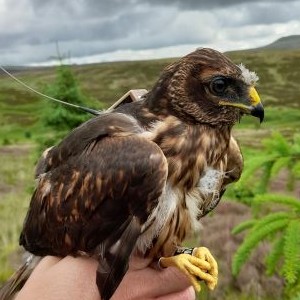
How young Hen Harriers are satellite tagged...and why it is important
Each year Hen Harrier Action funds several satellite tags that are fitted to Hen Harriers in the UK during the summer. In 2022, with your generous help we funded three satellite tags that were fitted to a male, Charlie, and two females, Iris and Macha. Sadly, only one of the three birds, Macha, has survived to this year, and continues to transmit.
However, the tracking data provided by these tags is priceless, and helps to inform studies, reports, and future conservation strategies for Hen Harriers. For example, the recent study co-authored by HHA Chair Cathleen Thomas that used data from active and recovered tags to estimate survival rates and causes of mortality.
We’re very grateful to everyone who donated and thought we’d share a little bit of the process. Our Chair, Dr Cathleen Thomas, coordinated the largest tagging programme for Hen Harriers in Europe whilst she was leading the RSPB’s Hen Harrier LIFE project and tells us a little bit about how it all works.
Once the funds are raised to pay for the tags, an order can be placed to have them manufactured. Each tag is custom-made to the correct specification to produce a 9g tag, which can be a lengthy process, depending on how many tags need to be manufactured. They are then shipped to the UK where they are checked by experts to ensure they are fully charged and emitting a signal – the tags that were fitted to Charlie, Iris and Macha broadcast to satellites circling the Earth, so we must ensure they are functioning correctly before they are fitted to the birds. The order is usually placed in Spring so the tags will be received in time for the start of Summer.
Observing skydancing Hen Harriers for nesting clues
During April, raptor workers and upland landowners and managers start to watch out for Hen Harriers moving to their breeding sites, monitoring locations up and down the country. Displaying (skydancing) birds are observed from a distance and potential nesting locations are recorded.
Not all the birds will breed successfully for a number of reasons, including weather conditions, presence of predators, food availability or sometimes they are deliberately deterred from settling and building a nest. Sadly, despite legal protection, some nests are destroyed by local land managers.
By mid-May we usually have a good idea of where nests with incubating birds are, often when a male is providing food to a female (or sometimes two!) and calls her off the nest. It’s quite amazing scanning the horizon with your binoculars waiting for the males to come in with food and then watching the food pass. The female flies up to the male, turns upside down and he must pass the food to her in mid-air – they’re such agile birds!
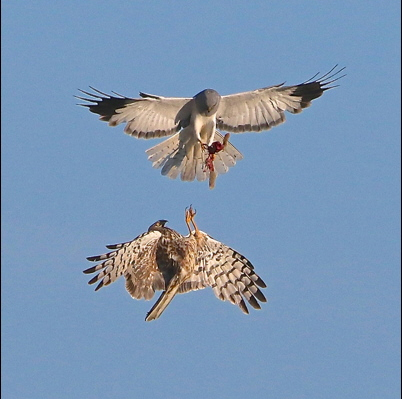
Satellite tagging the fledgling Hen Harrier chicks
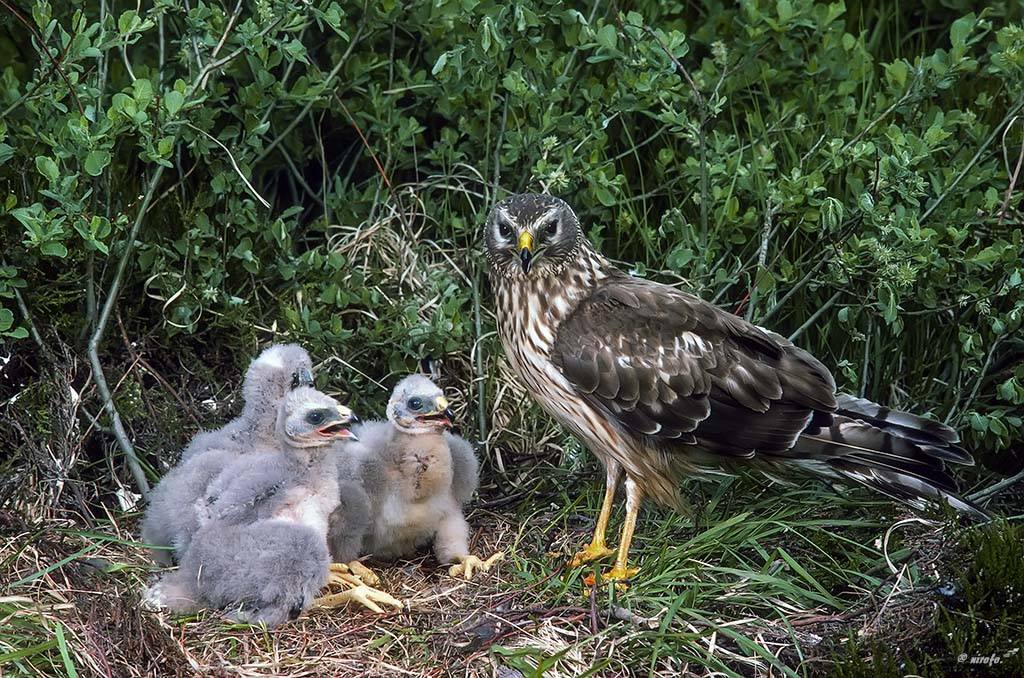
While there are eggs in the nest, the female alone incubates them, depending entirely on the male for food. She will occasionally leave the nest briefly to stretch her wings, but not for too long so the eggs don’t get cold or predated. Hen Harriers complete their clutch over several days, so the eggs will hatch asynchronously (i.e. they don’t all hatch at the same time).
The progress of the breeding attempt can be monitored from a distance once the chicks have hatched. Any check of a nest to establish the age and development of the chicks can only made by a licensed raptor worker.
Satellite tags are usually fitted to the chicks when they are around 28/29 days old, within a few days of fledging. Quite rightly, this activity is strictly regulated and, since this work can only be carried out by one of a handful of specially trained and licensed taggers, this time of year is very busy for them.
You can imagine that it can be quite complicated putting together schedules that allow the right people to visit the nest on the right day with the right-sized tag. Too early and the chicks will be too small to tag, but too late and they may already have fledged. Throughout this process, the bird’s welfare is given the highest priority.
Monitoring the satellite tags - a long term commitment
Once the tags are fitted, they continue to transmit data to the satellites, which can then be downloaded on a computer. The transmissions are checked every day to make sure the tags are still transmitting, and the birds are still moving around. This continues every day of their life, so it is a long-term commitment! The tags will continue to work for at least five years, but the sad reality is that most Hen Harriers do not live that long. Some of them die quite soon after leaving the nest because they aren’t very good at hunting – stakes are high for young hen harriers out on their own in the world. They need to hunt enough food to survive and get them through the winter.
Fortunately, it seems that if they manage to do that and make it through their first winter, they have a good chance of surviving to breeding age.
Any tagged birds that die of natural causes (such as illness, starvation, predation) are usually found due to the location data transmitted by the tag, and the birds are sent to a veterinary pathologist for a post- mortem. The tags that are recovered can be serviced and reused, fitted to chicks the following summer. Unfortunately, however, a significant proportion of Hen Harriers are illegally killed, usually on land intensively managed for driven grouse shooting. One of the key indicators of this is a sudden, inexplicable cessation in the transmission of data from a bird’s tag. Satellite tags are incredibly reliable, so a sudden stop in transmissions from a tag that has been functioning well is highly suspicious. These birds are usually never located, and their tags are lost as well, never to be heard from again.
The tagging process involves lots of different steps and the coordination of lots of different people, which makes it quite complicated, but tagging Hen Harrier chicks tells us a lot about the lives of these individuals, where they go, how far they can travel, what time of day they move around, and where they spend their summers and winters. We look forward to following the lives of this year’s tagged Hen Harriers.
